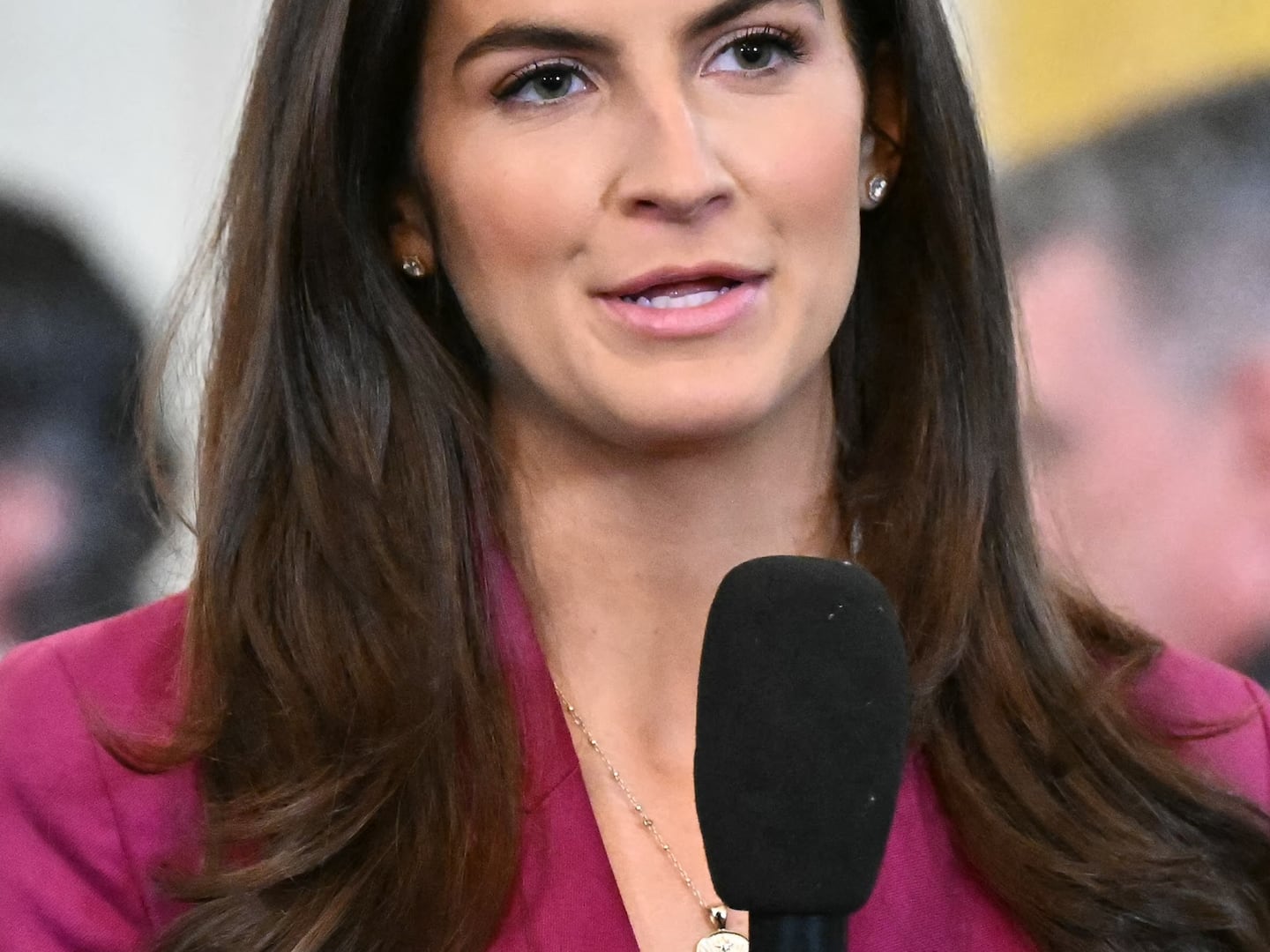
Contrary to popular opinion, cable network TLC thinks audiences can learn something from Sarah Palin, and the company is willing to pay her roughly $250,000 per episode, or $2 million in total, to educate them.
That’s the ballpark amount the woman formerly known as the governor of Alaska will pocket from the sale of an eight-episode documentary series to the Discovery-owned network, sources familiar with the project told The Daily Beast.
Produced in conjunction with reality-TV show kingpin Mark Burnett, Sarah Palin’s Alaska will reveal the 49th state’s “powerful beauty as it has never been filmed, as told by one of the state’s proudest daughters,” according to a press release announcing the deal. Or, as a rival network head who saw a trailer for the show described it, “It’s basically a travelogue with Palin and a few cameras running around Alaska in a helicopter.”
“It’s probably safe to say that this will be the most expensive show on the network,” says entertainment analyst David Joyce.
• Shushannah Walshe: Inside the Surprising McCain-Palin Friendship Despite the rough concept, sources involved or familiar with the project say TLC is paying between $800,000 and $1.2 million per episode for the show. A TLC representative declined to comment on the deal’s terms. Burnett, who records show contributed to the Clinton and Obama presidential campaigns but not to McCain’s, where Palin was tapped as the vice-presidential nominee, did not return a call for comment.
Of course not all that money goes to Palin and Burnett: The bulk of it goes to production costs, which television industry executives and talent agents say should run between $500,000 and $600,000 per episode for a show of this nature. Using $1 million per episode—the midpoint of the rumored price range—as a baseline leaves between $400,000 and $500,000 for Palin and Burnett to split. Assuming an equal partnership between producer and talent, that equates to between $200,000 and $250,000 per episode, or between $1.6 million and $2 million, for the entire series for each.
Even at the low end of the price range, the deal is still a rich one for TLC, whose stable of programs like Cake Boss and Little People Big World typically cost less than $300,000 per episode to produce. Indeed, according to Miller Tabak entertainment analyst David Joyce, one of TLC’s biggest hits, Jon and Kate Plus 8 cost an estimated $300,000 per episode.
“It’s probably safe to say that this will be the most expensive show on the network,” says Joyce. “A reality show should not be costing this much. It’s close to what would be paid per episode for a scripted show.”
Reality-TV shows like this bank the most bucks from sponsorships and foreign rights sales, but even here Palin herself is likely to benefit the least. A source involved in the deal says TLC acquired all the global rights to the show, meaning that the network would collect the international sales money—if there’s any to be collected, that is. While shows on TLC’s brother network Discovery, like Planet Earth and the new series Life, have broad scopes that can easily be adapted to foreign markets, this show’s U.S. focus—and Palin’s polarizing politics—may limit how well it travels internationally.
And though contracts differ on a show-by-show basis, Burnett’s modus operandi is to try and retain as much of the sponsorships rights—think Coca-Cola product placement in exchange for a fee—as possible. For instance, sources say he owns certain sponsorship rights to The Apprentice but doesn’t have any for Survivor. Either way, sources says Palin is unlikely to have any stake in the international or sponsorship rights.
Bringing Palin to TLC is part of Discovery’s larger strategy of building shows around personalities that can create buzz and bring eyeballs to its networks. Discovery show hosts Mike Rowe of Dirty Jobs, Bear Grylls of Man vs. Wild, and Adam Savage and Jamie Hyneman from Mythbusters have become household names in recent years. Next year, the company is also planning to launch an entire network around perhaps television’s biggest personality, Oprah Winfrey, called OWN.
TLC has tried to replicate Discovery’s strategy for its women-centric audience. To be sure, the network achieved its highest ratings ever at the height of the Gosselin’s marriage meltdown, and it has been trotting out Buddy Valastro of Cake Boss and the Roloff family from Little People Big World at company events like the recent premiere of Life in New York recently.
The buzz has translated to solid gains in ratings, revenue, and subscribers. TLC has grown total household ratings for 17 consecutive months and the 1.1 million average total viewers that tuned in to the network in the fourth quarter was not only up 14 percent from the prior year, but also its largest average audience since 2004. A decade ago, TLC’s estimated total revenue was $354 million; this year it is expected to reach $445 million, according to estimates from Kagan Media Research. Subscribers have grown from 77 million in 2000 to approximately 103 million this year.
While Palin’s arrival is certain to generate buzz, her impact on ratings is open to debate. Joyce thinks TLC will experience a net ratings gain and could potentially increase affiliate fees—or the money cable distributors pay to carry the network—as a result of Palin’s show. “Controversy equals ratings,” says the analyst.
Others, however, say that TLC is running a risk by bringing in Palin. The thinking among this contingent is that the network alienated some of its audience—namely parents with small children—with its handling (or, more harshly described, exploitation) of the Gosselin’s divorce. Palin, they say, could disenfranchise viewers even more.
Beyond that, the show’s premise may be inherently flawed. According to one programming source, other shows with the upper reaches of North America as a backdrop, such as Ice Road Truckers or Deadliest Catch, work because there’s a sense of adventure and jeopardy baked into them—people’s lives are at risk in these shows. Last month, for example, Captain Phil Harris, who starred on Deadliest Catch, died of a stroke while helping unload crabs.
“Palin isn’t going to be in any danger at all,” says this source, with a touch of sadness. Sources involved in the deal dismiss this criticism as nonsense, however, noting that the show is only now going into full production. “We have plenty of time to develop the concept, and we have two of the most interesting characters around in Palin and Alaska,” says one of these sources.
Peter Lauria is senior correspondent covering business, media, and entertainment for The Daily Beast. He previously covered music, movies, television, cable, radio, and corporate media as a business reporter for The New York Post.






